Spring starts Thursday with the vernal equinox. What does that mean?
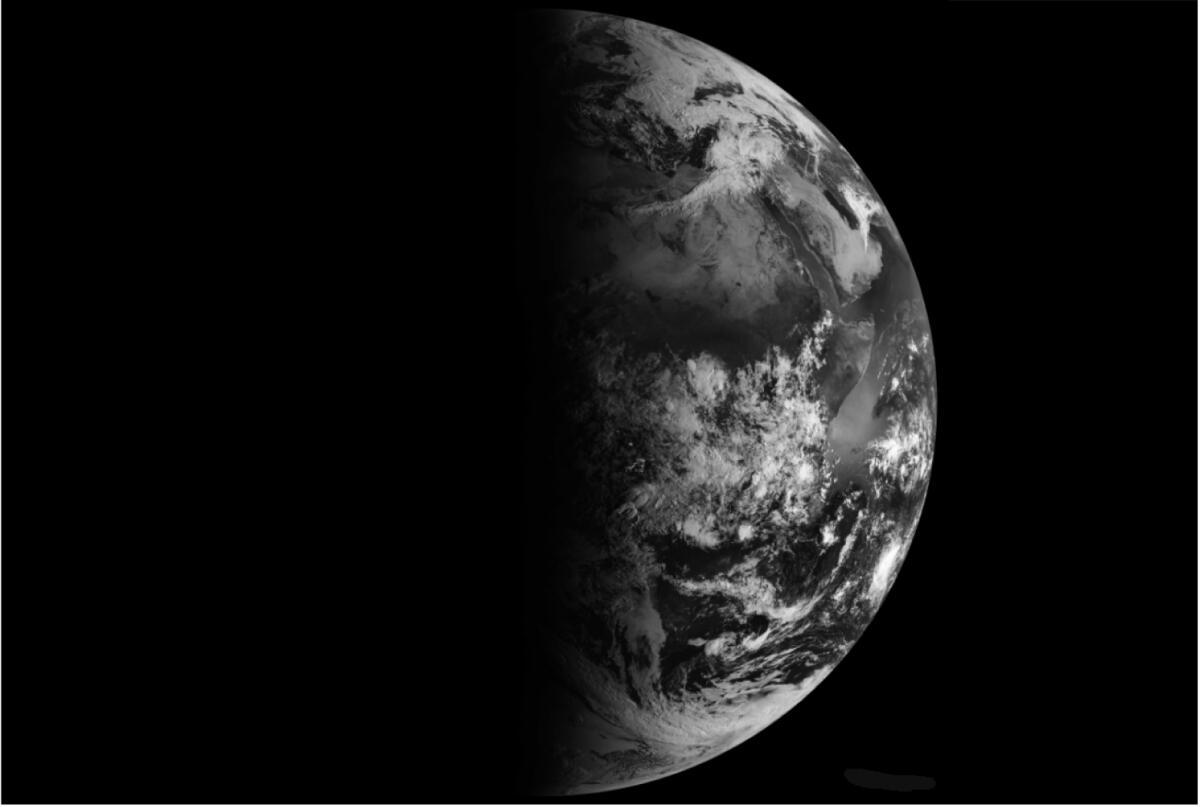
- Share via
When Punxsutawney Phil didn’t see his shadow on Groundhog Day this year, it meant we could expect an early spring.
Maybe Phil checked the calendar before he emerged from his burrow in Punxsutawney, Pa., and he knew that the vernal or spring equinox would fall on March 19 this year because of leap day. Spring hasn’t arrived this early in the U.S. since 1896.
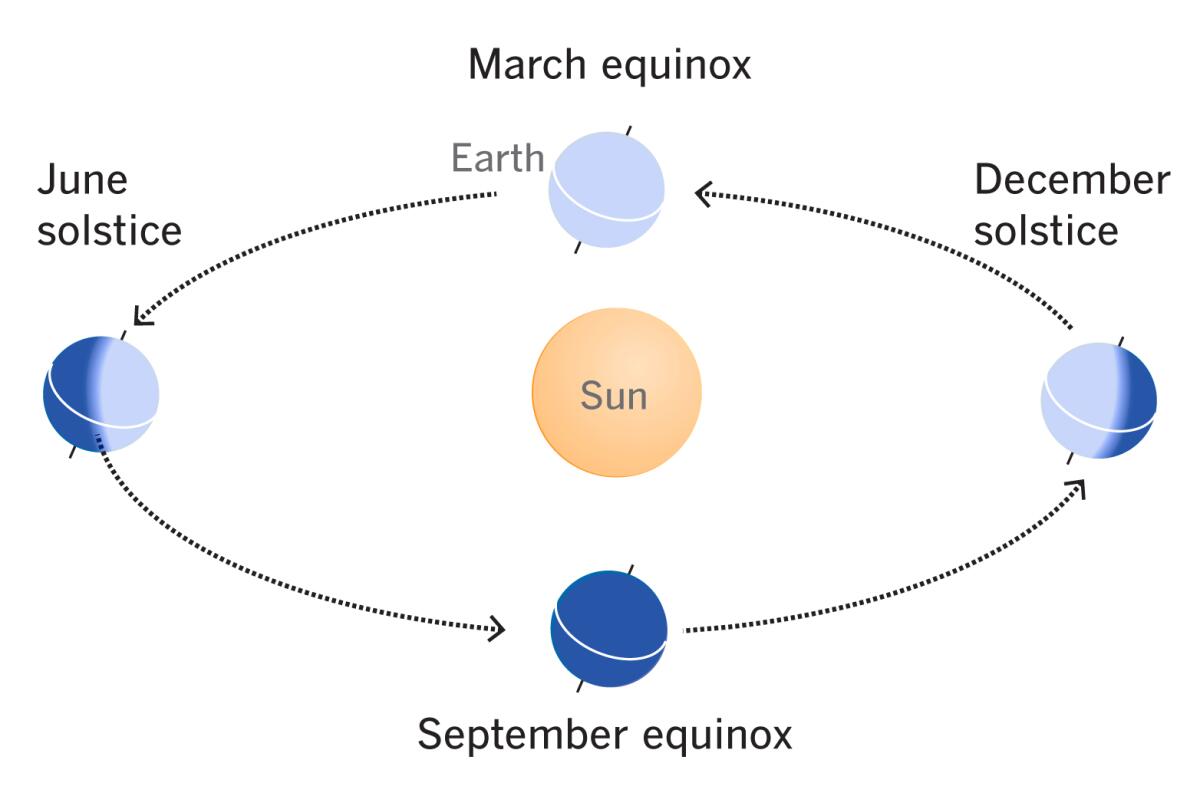
Spring starts with the equinox. What’s the equinox?
Thursday is the vernal or spring equinox in the Northern Hemisphere. It’s also the autumnal equinox in the Southern Hemisphere. So sometimes the day is referred to as the March equinox to avoid confusion.
On the equinox, the Earth’s axis will be tilted neither toward nor away from the sun, a neutral point that will result in nearly equal hours of sunlight and darkness at all latitudes. Thereafter, as the Northern Hemisphere tilts toward the sun, the sun’s arc across the sky will continue to climb higher, with longer days and more direct light, until it peaks with the summer solstice on June 20.
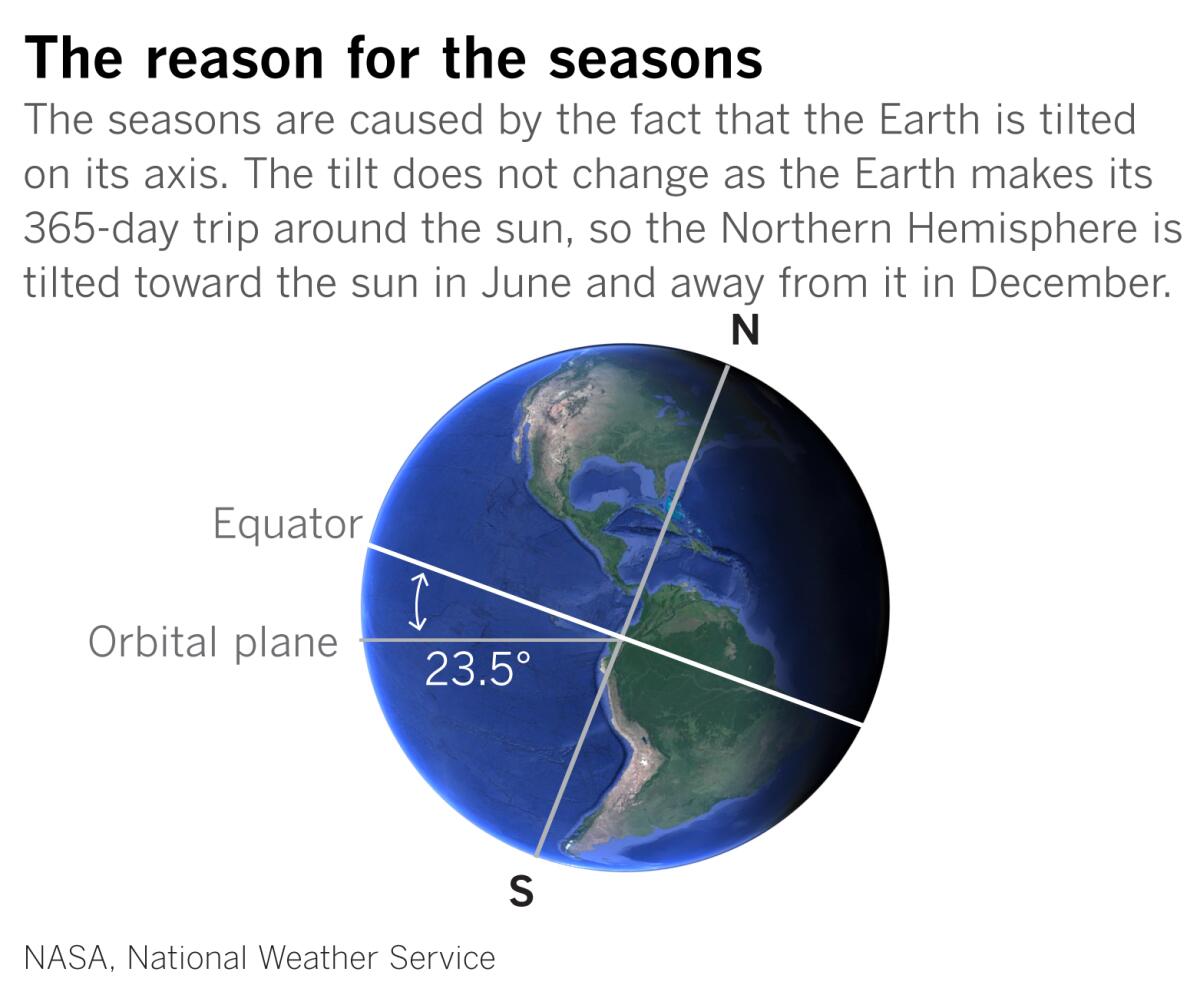
At the same time, the Southern Hemisphere is tilted away from the sun, creating winter there. This cycle of seasons occurs as the Earth makes its complete revolution of the sun approximately every 365 days.
It’s not precisely 365 days. That’s because the Earth’s 574,395,530-mile annual orbit of the sun really takes 365.2422 days. So every year that is exactly divisible by 4 is a leap year, in which a 29th day is added to February. The exception is for years exactly divisible by 100. But there’s an exception to that: The centurial years that are exactly divisible by 400 are leap years.
Back to the seasons. They’re caused by the Earth’s 23.5-degree tilt on its axis as it makes its way around the sun. The Northern Hemisphere is tilted toward the sun in June and away from the sun in December. Naturally, when a hemisphere is tilted toward the sun, it’s warmer — creating summer. When a hemisphere is tilted away from the sun, it’s colder, causing winter.
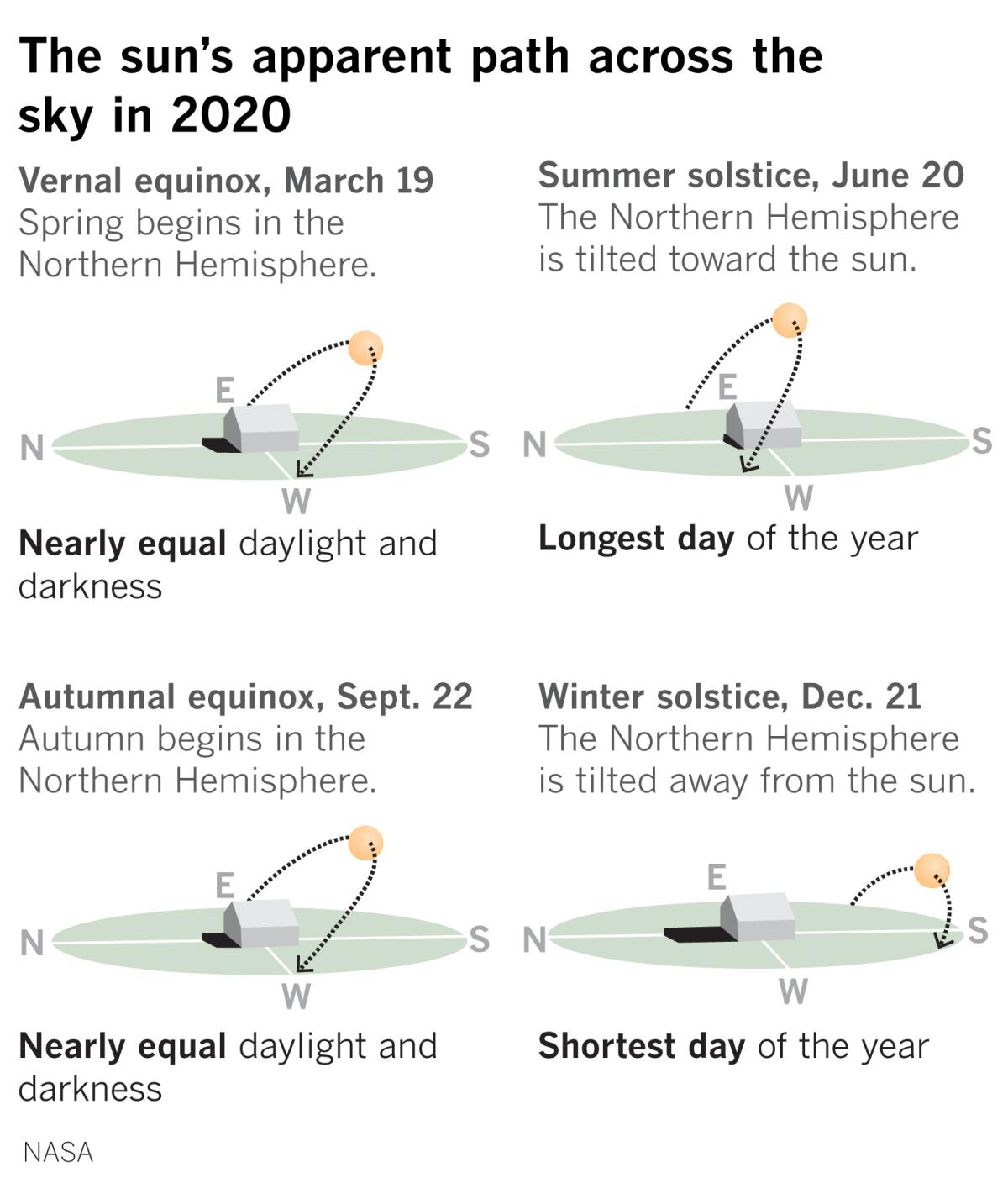
At the equinox, the noonday sun is directly overhead at the equator.
The word equinox is derived from the Latin words aequus (equal) and nox (night). Although day and night aren’t exactly equal.
At the equator on the equinox and for the next several days, the length of daylight hours will be about 12 hours and 6.5 minutes. At about 30 degrees north, the latitude of New Orleans, for example, daylight will be 12 hours and 8 minutes. At 60 degrees north latitude, just south of Anchorage, Alaska, daylight will be 12 hours and 16 minutes.
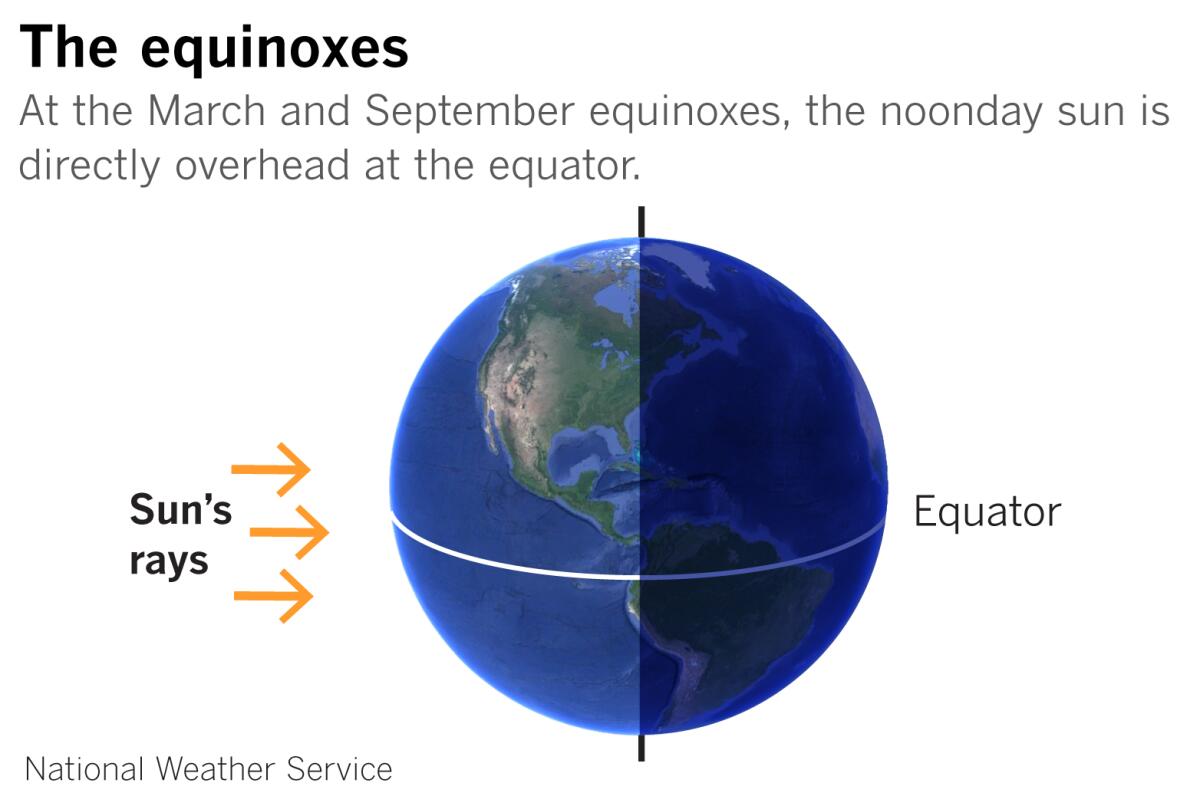
At the summer solstice in the Northern Hemisphere, the sun is directly over the Tropic of Cancer, at 23.5 degrees north latitude. This is the longest day of the year for all locations north of the Tropic of Cancer, which runs through Mexico, the Bahamas, Egypt and India.
The solstice also is the shortest day of the year in the Southern Hemisphere.
The shortest day of the year in the Northern Hemisphere occurs when the sun is directly over the Tropic of Capricorn, at 23.5 degrees south of the equator. The Tropic of Capricorn runs through places such as Australia, Chile, Brazil and South Africa.
In times of upheaval such as these, it may be comforting to know that the cycle of seasons can be counted on to continue to like clockwork.
More to Read
Sign up for Essential California
The most important California stories and recommendations in your inbox every morning.
You may occasionally receive promotional content from the Los Angeles Times.









